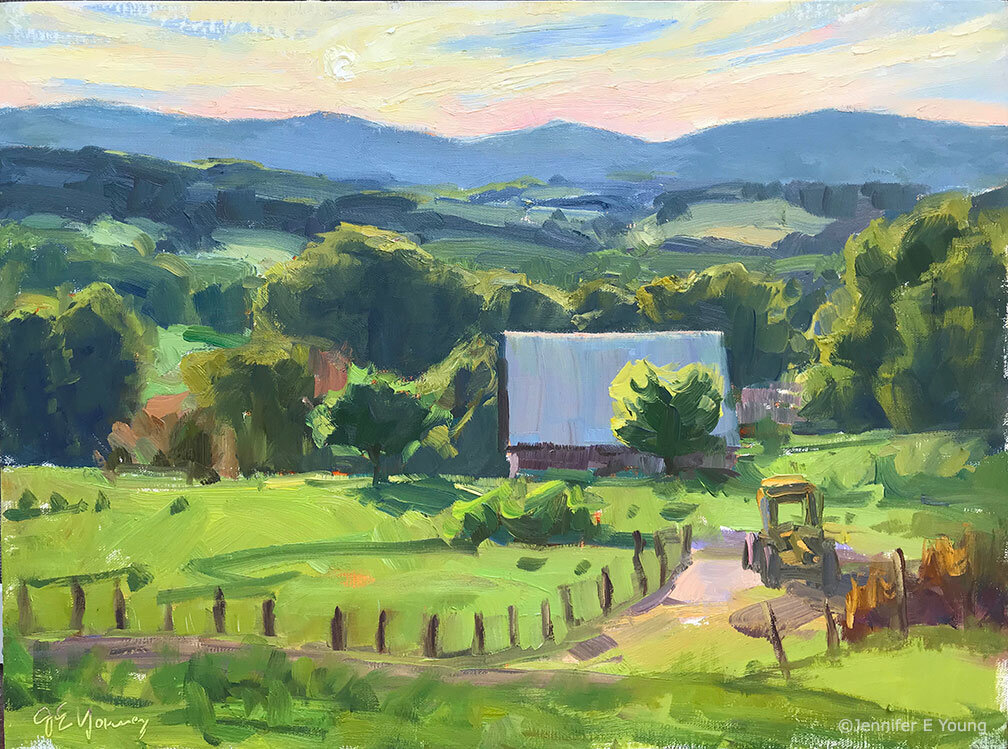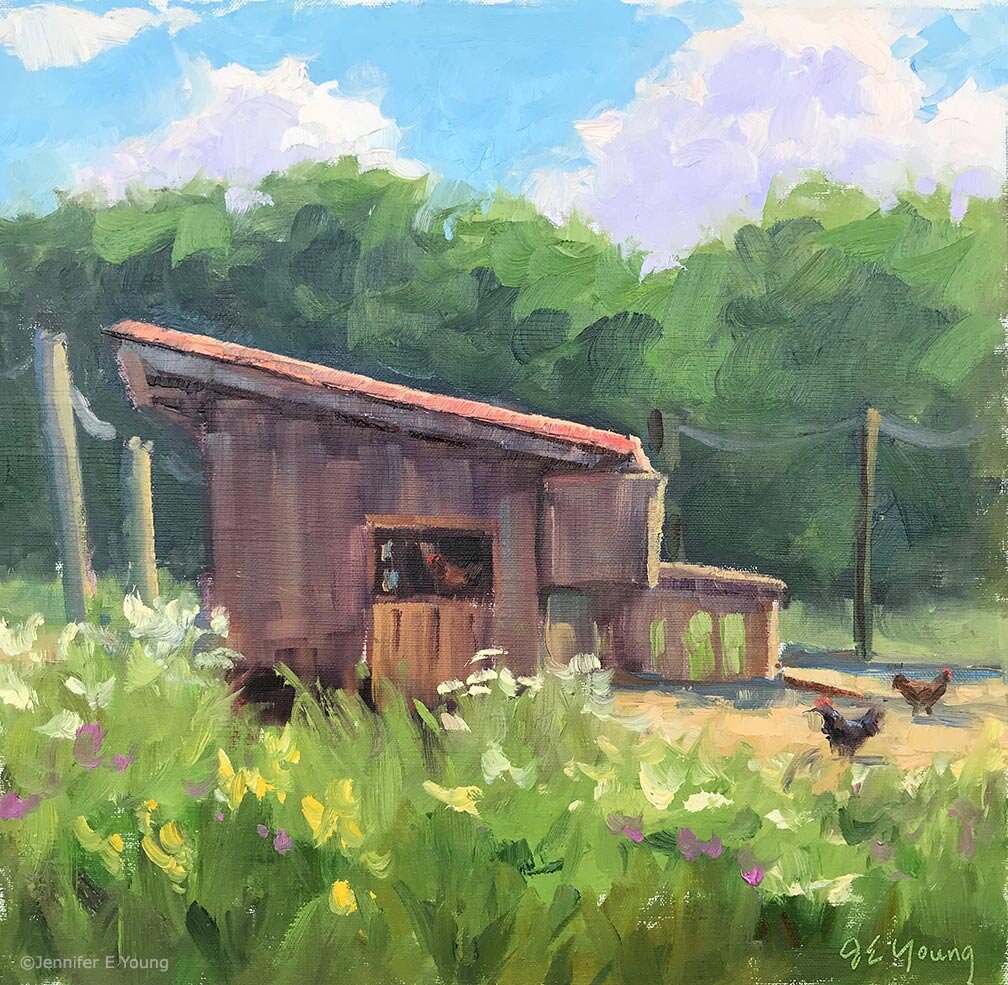As with all of my recent studio paintings, this piece was done in water miscible oil paints. I haven't said much about these paints lately, but since I have been working with them for a while now I feel I have enough experience with them to comment.
The main reason I decided to experiment with these paints is because of health. I have become more sensitive to a lot of things, and I've suspected for a while that painting with solvents has been giving me problems; especially when painting indoors. While it is possible to paint in traditional oils solvent -free (in the past I have used walnut oil, and now Gamblin has some good solvent-free products) creating initial washes is a challenge without solvents. I am also currently renting a studio space and I am sensitive to any possible odors that the other business might sense. Plus, cleanup is so, so much easier using just water.
Water miscible oils behave a lot like traditional oils, though there are some exceptions/ differences. There was a bit of a learning curve in that not only did I have to learn the properties of the paints, but the colors differed, sometimes significantly, from my go-to traditional oils that I had become accustomed to working with for nearly 20 years. In many ways, however, I actually prefer the water miscible oils. Below I will attempt to outline some benefits and possible disadvantages.
Pros:
- Simple easy clean up with water! (This is really, really hard to overstate!)
- Combined with a medium formulated for this type of paint, creates luscious, buttery brushwork similar to and perhaps even exceeding ( depending on the application method) traditional oils.
- For myself, personally, I am finding that these paints retain their luster from wet to dry and I do not get the "sunken-in" effect that can sometimes happen with thinner passages in traditional oils. (As far as medium goes, the same rules apply as those for traditional paints; fat over lean, no more than around 20 % medium to paint, etc.)
- Most brands offer a varnish formulated specifically for water miscible oils, but so far I have found varnishing unnecessary. This is pretty big as it eliminates a considerable step from the finish.
- Odorless
- No or low VOC's and off-gassing, which means a much lower risk of toxicity for the artist.
Cons:
- As for appropriate painting surfaces, there are not as many options as there are for traditional oil paints. My understanding is that acrylic gesso grounds are best for water miscible oils. Oil grounds and shellac on wood may be more problematic.
- Traditional bristle brushes tend to turn into soggy mops if too much water is present (I do limit the water, but I also use synthetic bristle brushes by Rosemary Brushes with my WM oils now. They behave like bristle brushes. They keep their shape well and have a great spring, but don't turn to mops. They are great for traditional oil paints too. (In short, they.are.awesome!!!)
- Too much water can also cause the paint to become cloudy or sticky,
- While these oils can be mixed/interchanged up to 25% with traditional oils, I have received little technical response regarding the interchangeability of the WM paints among other WM brands. Early indications recommended against this practice, given the different compounds used by different brands. I am still a little unclear about this, so out of caution I paint with Royal Talens Cobra exclusively right now. I like them very much and have been wary to mix with a different brand like WN Artisan paints.
- So far, there has been zero support from the manufacturer of these paints when I have written them about technical properties, though I have sent in at least three questions through their online channels requesting technical support. I like this paint overall, but. I find this highly unusual, especially in comparison to Gamblin whose support has always been stellar, and Winsor Newton's, whose is also very good.
- Due to the fact that these paints will react to water while they are wet, they can be a problem in a sudden rain storm. Not that painting without cover in the rain is good for any painting, but it sometimes happens unexpectedly when painting en plein air. For this reason, I still use traditional oils for plein air painting, either minimally using OMS or painting solvent free with safflower oil and the Gamblin solvent free gel. Plus, I still have quite a supply of traditional oils, so I will probably keep using them to some extent.
Pro/Con:
Slightly longer dry time. This may prove to be a con if you are up against the deadline, but since I am using these for my larger studio paintings I love, love, love this aspect. My schedule has been fairly erratic this year and It is so much easier to go back into a larger painting and rework it than it is with traditional oils. Even after a couple of days, the edges can still be manipulated somewhat and I don't get that "lip" of built-up texture that I would have to sometimes have to scrape down with a traditional oil painting that I let sit too long. I'd say given the way I paint, it takes a good 5 days for the water soluble oils to dry to the touch, as compared to about 3 days for the traditional oils.
How about you? Have you tried water miscible oil paints? Which brands did you try and what did you think?




















